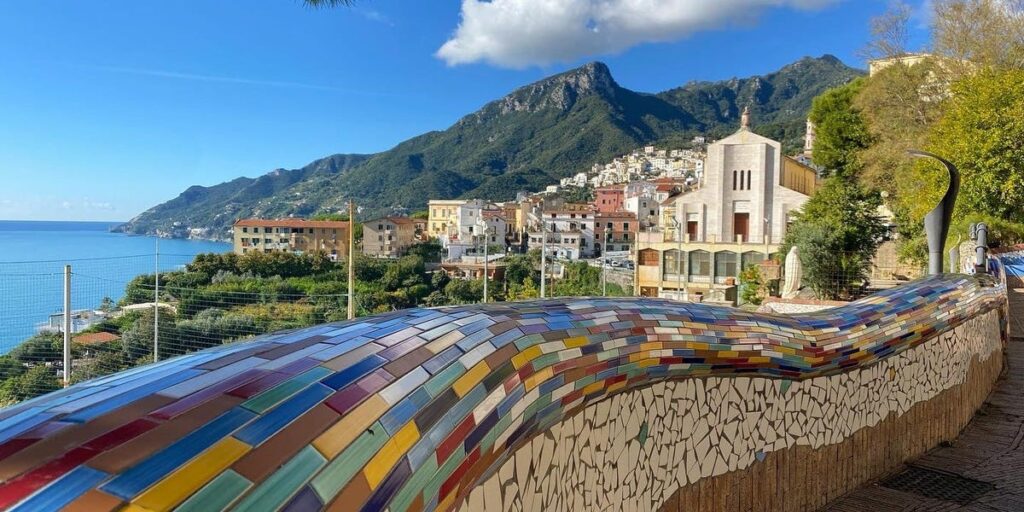Originally, taking a road trip across Italy was my boyfriend’s idea. I love adventure too, so on short notice, we packed up the Volkswagen and left.
Once I realized the Amalfi Coast would be a short detour from our route, I made a plan to spend 10 days taking buses along it on my own.
I spent my first two nights on the eastern edge of the coast in Vietri sul Mare, the birthplace of the area’s famed ceramics. It quickly became one of my favorite stops on the trip.
And, after visiting the nearby — and more widely known — Positano a few days later, I realized just how special (and affordable) Vietri sul Mare really is.
Right off the bat, Vietri sul Mare took my breath away
Known as la prima perla, “the first pearl” of the Amalfi Coast, Vietri sul Mare is the eastern gateway to the 13 towns that make up the UNESCO World Heritage site.
Just outside Salerno, it’s easy to get to by train or bus from Sorrento or Naples, and is just about an hour by ferry to Amalfi or Positano.
Once I arrived, there was so much to take in, from the peach-colored buildings tumbling toward the sea to the cathedrals glinting in the sun, all craddled by the Lattari Mountains.
The area’s benches, homes, fountains, benches, and signs are adorned with colorful tiles, which Vietri’s artisans have been hand-painting since at least the 15th century.
Throughout my trip, I was impressed by the prices, warmth, and lack of crowds I experienced
Vietri sul Mare was the only town I visited in Italy where I could arrive at a restaurant without a reservation and still be seated right away.
The food was tasty and fairly priced, and the service friendly and warm. One night, at a trattoria, the owner stopped at my table to chat and surprise me with extra bites. The meal ended with limoncello on the house.
Six courses, dessert, and a carafe of wine came to about 50 euros (just under $60) — roughly the same amount I paid a few days later for a two-course meal and a glass of wine in Positano.
On top of that, I preferred my shopping experiences in Vietri sul Mare, where most sellers seemed to focus on art and locally crafted items.
Its main street’s sidewalks were lined with wicker baskets of ceramic trinkets — including many affordable options. It felt like a far cry from Positano, where my shopping experiences felt more limited to upscale clothing boutiques or touristy shops packed with generic, mass-produced souvenirs.
By the time I headed to one of the town’s main beaches, I was in love. I couldn’t believe how empty it was. My footprints were the only ones in the sand — a rare sight on the Amalfi Coast.
While at Positano’s main beach a few days later, I couldn’t even find a single slice of sand in the sun for myself.
Throughout my trip, I saw plenty of visitors in Vietri sul Mare — even in November, the Amalfi Coast’s offseason — but nothing like Positano’s crowds. Plus, as the former is a bit larger, it felt more spread out.
All in all, the town left me feeling impressed and wanting to come back
For me, Vietri sul Mare had everything I wanted in a coastal town: art, history, great food, and value.
By the end of my trip, I realized just how special the town is for its vibrant streets, charming beaches, and creative local community.
With an economy rooted in ceramics rather than just tourism, Vietri sul Mare had a different energy than spots like Positano, which felt more high-end, crowded, and tourist-focused than I prefer.
If I went back to Italy, I’d likely base myself in Vietri sul Mare and take advantage of its ferry port to see the rest of the Amalfi Coast.
Read the full article here


